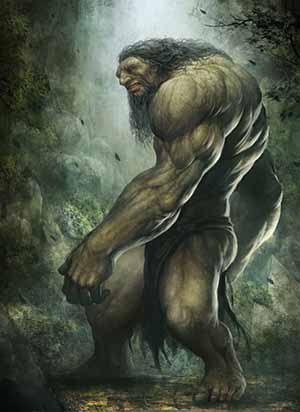 Giants. Ogres. Trolls. Were they real?
Giants. Ogres. Trolls. Were they real?
We’ve all grown up with stories about really big man-like beings. They were usually depicted as cruel, cannibalistic, baby-eating monsters with muscular bodies and thick manes of hair, occasionally with only one eye, and at times with green skin.
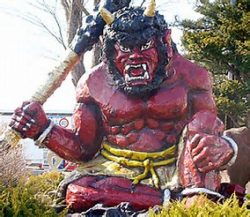
The Japanese oni were portrayed with claws, pointed teeth, and horns, often carrying a wicked club or other weapon. Legends and folk tales about ogres, giants, and trolls can be found in the mythologies and texts of Europe (Scandanavian Jötnar, Greek Titans), India (The Ramayana), the Middle East (Sumerian Anunnaki, the Biblical Nephilim), and Britain (Welsh Gogmagog, Cormoran of Penzance, and the Fomorians of Ireland). These beings inspired terror and often became the target of some hero’s quest.
In my own fiction, I write about large, clawed reptilian men who are 8-9 feet tall, which seems daunting enough to me, but what would I do if I encountered someone 18 or 20 feet high towering above me? Probably wet my pants. We foolish humans tend to be afraid of anything bigger than we are and seem to have a penchant for killing anything threatening. I suppose it’s some kind of animalistic instinct or perhaps even ingrained cellular memory of being munched by something monstrous.
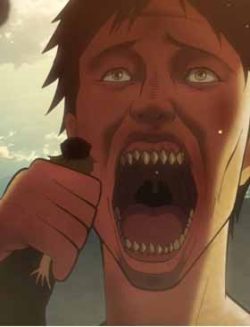 Curiously, some of the more recent stories of large humans endow them with a highly sympathetic quality, portraying them as misunderstood, noble outcasts such as Roald Dahl’s The BFG (“Big Friendly Giant”), the charming ogre couple of the Shrek films from Dreamworks Animation (incidentally, “Schreck” is German for “fright”), or the comical warriors Dorry and Broggy from Eiichiro Oda’s One Piece.
Curiously, some of the more recent stories of large humans endow them with a highly sympathetic quality, portraying them as misunderstood, noble outcasts such as Roald Dahl’s The BFG (“Big Friendly Giant”), the charming ogre couple of the Shrek films from Dreamworks Animation (incidentally, “Schreck” is German for “fright”), or the comical warriors Dorry and Broggy from Eiichiro Oda’s One Piece.
Yet all too vivid are the traditional portrayals of giants and trolls as terrifying cannibals as in Isayama Hajime’s Attack on Titan, J. R. R. Tolkien’s The Hobbit, J. K. Rowling’s Harry Potter series, or Winston the Ogre and his wife in Terry Gilliam’s Time Bandits. The fear of being eaten seems to be indelibly embedded in our collective psyche.
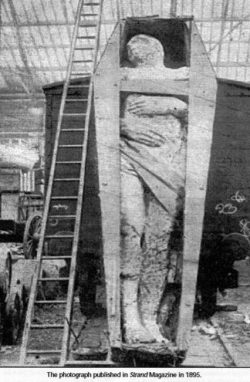 There has been a good deal of research and speculation written about giants over the past few decades. An internet search will bring up a plethora of photographs, articles, books, and videos showing enormous skeletons, some of which have been labeled as hoaxes. Reports of skeleton disappearances and cover-ups abound, muddying the water around the subject as people cling to narrow scientific or religious definitions of who we are and where we came from.
There has been a good deal of research and speculation written about giants over the past few decades. An internet search will bring up a plethora of photographs, articles, books, and videos showing enormous skeletons, some of which have been labeled as hoaxes. Reports of skeleton disappearances and cover-ups abound, muddying the water around the subject as people cling to narrow scientific or religious definitions of who we are and where we came from.
Personally, the overwhelming abundance of detailed lore in old texts about races of giants and the hundreds of carvings, paintings, and drawings of these beings from ancient cultures are enough to convince me of the validity of their existence.
But just one look at photographs such as the one on the left of the fossilized remains of a man over twelve feet tall found in Ireland which was published in 1895, long before the advent of digital manipulation, is enough to wash away any remaining doubt that giants were indeed quite real.
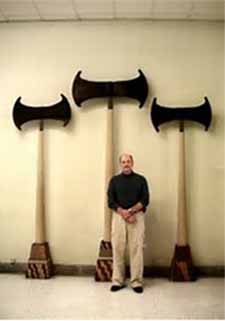 The physical evidence of large humanoids who once lived on earth spreads across the continents. Mummified bodies and body parts, skeletons and bone fragments, and enormous weapons have been found, such as the double bronze axes from the Minoan Villa at Niroa which are on display in the Archaeological Museum of Heraklion, Crete.
The physical evidence of large humanoids who once lived on earth spreads across the continents. Mummified bodies and body parts, skeletons and bone fragments, and enormous weapons have been found, such as the double bronze axes from the Minoan Villa at Niroa which are on display in the Archaeological Museum of Heraklion, Crete.
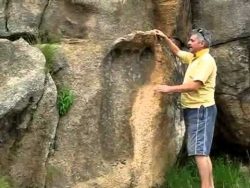 To the right, Michael Tellinger stands next to a 1.2 meter footprint near Mpuluzi, South Africa, one of several such footprints imprinted in stone around the globe.
To the right, Michael Tellinger stands next to a 1.2 meter footprint near Mpuluzi, South Africa, one of several such footprints imprinted in stone around the globe.
In North America, numerous giant skeletons have been unearthed, including the legendary red-haired giants that once harassed the Paiute tribe near Lovelock, Nevada.
Here’s a quick, level-headed video overview of some of the finds around the globe presented by Mike Chen on YouTube:
So who were these enormous men and women?
In many written accounts, the gods themselves were human-like beings and larger in stature than their human subjects. According to Sumerian tablets and the scrolls that became the Biblical texts, the giants were the hybrid offspring of the off-world gods who mated with humans. The descendants of the gods were installed as nobility who answered to their lordly ancestors in order to rule over the masses of smaller humans.
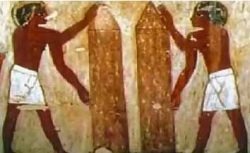 Sons of the gods like Gilgamesh or Heracles were portrayed as “good guys” (of course, that depends on one’s perspective). The gods and their progeny were reputedly quite promiscuous. Over time, did they produce a population of large men and women, lower in status than the nobility, who might have been used in service to provide muscle to build the extensive network of pyramids and megalithic sites scattered across the globe? Did some of them perhaps degenerate over the centuries into roving packs of human-eating monsters?
Sons of the gods like Gilgamesh or Heracles were portrayed as “good guys” (of course, that depends on one’s perspective). The gods and their progeny were reputedly quite promiscuous. Over time, did they produce a population of large men and women, lower in status than the nobility, who might have been used in service to provide muscle to build the extensive network of pyramids and megalithic sites scattered across the globe? Did some of them perhaps degenerate over the centuries into roving packs of human-eating monsters?
There are quite a few articles, websites, documentaries, and books on the subject, so, if it piques your interest like it does mine, I encourage you to do some exploring on your own. I’ve started a list of fictional portrayals and books I’ve read on giants, ogres, and trolls, so feel free to send me suggestions for other good additions to include.
In my view, there is far too much evidence to dismiss giants as the fantasy of so-called primitive people. If we expand our understanding of what is possible, we just might piece together a more accurate version of human – and giant – development within earth’s history.

Erin MacMichael is a visionary science fiction author and artist, creator of the T'nari Renegades series of novellas, novels, covers, and artwork. Her lifelong quest has been to explore past the boundaries of conventional thinking and figure out what really has transpired on this planet. She has traveled extensively throughout the world and lives in the Pacific Northwest with her marvelous offspring.
2 Comments
Giants. Ogres. Trolls. Were they real?
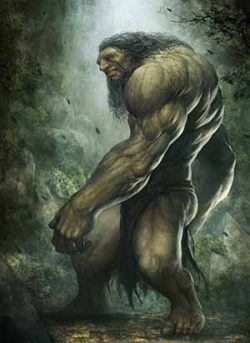
We’ve all grown up with stories about really big man-like beings. They were usually depicted as cruel, cannibalistic, baby-eating monsters with muscular bodies and thick manes of hair, occasionally with only one eye, and at times with green skin.

The Japanese oni were portrayed with claws, pointed teeth, and horns, often carrying a wicked club or other weapon. Legends and folk tales about ogres, giants, and trolls can be found in the mythologies and texts of Europe (Scandanavian Jötnar, Greek Titans), India (The Ramayana), the Middle East (Sumerian Anunnaki, the Biblical Nephilim), and Britain (Welsh Gogmagog, Cormoran of Penzance, and the Fomorians of Ireland). These beings inspired terror and often became the target of some hero’s quest.
In my own fiction, I write about large, clawed reptilian men who are 8-9 feet tall, which seems daunting enough to me, but what would I do if I encountered someone 18 or 20 feet high towering above me? Probably wet my pants. We foolish humans tend to be afraid of anything bigger than we are and seem to have a penchant for killing anything threatening. I suppose it’s some kind of animalistic instinct or perhaps even ingrained cellular memory of being munched by something monstrous.
Curiously, some of the more recent stories of large humans endow them with a highly sympathetic quality, portraying them as misunderstood, noble outcasts such as Roald Dahl’s The BFG (“Big Friendly Giant”), the charming ogre couple of the Shrek films from Dreamworks Animation (incidentally, “Schreck” is German for “fright”), or the comical warriors Dorry and Broggy from Eiichiro Oda’s One Piece.

Yet all too vivid are the traditional portrayals of giants and trolls as terrifying cannibals as in Isayama Hajime’s Attack on Titan, J. R. R. Tolkien’s The Hobbit, J. K. Rowling’s Harry Potter series, or Winston the Ogre and his wife in Terry Gilliam’s Time Bandits. The fear of being eaten seems to be indelibly embedded in our collective psyche.
There has been a good deal of research and speculation written about giants over the past few decades. An internet search will bring up a plethora of photographs, articles, books, and videos showing enormous skeletons, some of which have been labeled as hoaxes. Reports of skeleton disappearances and cover-ups abound, muddying the water around the subject as people cling to narrow scientific or religious definitions of who we are and where we came from.
Personally, the overwhelming abundance of detailed lore in old texts about races of giants and the hundreds of carvings, paintings, and drawings of these beings from ancient cultures are enough to convince me of the validity of their existence.

But just one look at photographs such as the one above of the fossilized remains of a man over twelve feet tall found in Ireland which was published in 1895, long before the advent of digital manipulation, is enough to wash away any remaining doubt that giants were indeed quite real.
The physical evidence of large humanoids who once lived on earth spreads across the continents. Mummified bodies and body parts, skeletons and bone fragments, and enormous weapons have been found, such as the double bronze axes from the Minoan Villa at Niroa which are on display in the Archaeological Museum of Heraklion, Crete.

Below, Michael Tellinger stands next to a 1.2 meter footprint near Mpuluzi, South Africa, one of several such footprints imprinted in stone around the globe.

In North America, numerous giant skeletons have been unearthed, including the legendary red-haired giants that once harassed the Paiute tribe near Lovelock, Nevada.
Here’s a quick, level-headed video overview of some of the finds around the globe presented by Mike Chen on YouTube:
So who were these enormous men and women?
In many written accounts, the gods themselves were human-like beings and larger in stature than their human subjects. According to Sumerian tablets and the scrolls that became the Biblical texts, the giants were the hybrid offspring of the off-world gods who mated with humans. The descendants of the gods were installed as nobility who answered to their lordly ancestors in order to rule over the masses of smaller humans.

Sons of the gods like Gilgamesh or Heracles were portrayed as “good guys” (of course, that depends on one’s perspective). The gods and their progeny were reputedly quite promiscuous. Over time, did they produce a population of large men and women, lower in status than the nobility, who might have been used in service to provide muscle to build the extensive network of pyramids and megalithic sites scattered across the globe? Did some of them perhaps degenerate over the centuries into roving packs of human-eating monsters?
There are quite a few articles, websites, documentaries, and books on the subject, so, if it piques your interest like it does mine, I encourage you to do some exploring on your own. I’ve started a list of fictional portrayals and books I’ve read on giants, ogres, and trolls, so feel free to send me suggestions for other good additions to include.
In my view, there is far too much evidence to dismiss giants as the fantasy of so-called primitive people. If we expand our understanding of what is possible, we just might piece together a more accurate version of human – and giant – development within earth’s history.

Erin MacMichael is a visionary science fiction author and artist, creator of the T'nari Renegades series of novellas, novels, covers, and artwork. Her lifelong quest has been to explore past the boundaries of conventional thinking and figure out what really has transpired on this planet. She has traveled extensively throughout the world and lives in the Pacific Northwest with her marvelous offspring.

Erin MacMichael is a visionary science fiction author and artist, creator of the T'nari Renegades series of novellas, novels, covers, and artwork. Her lifelong quest has been to explore past the boundaries of conventional thinking and figure out what really has transpired on this planet. She has traveled extensively throughout the world and lives in the Pacific Northwest with her marvelous offspring.
2 Comments
-
Regina Clarke on August 16, 2019 at 4:59 am
I believe they were among us, for sure. The first one I ever encountered in reading outside of fairy tales was the Welsh Ysbaddaden, who I wager you already have on your list ( https://en.wikipedia.org/wiki/Ysbaddaden) and I wrote a short story in my literary collection “The Winning of Olwen” mentioning him. This stuff is just so fascinating, and add King Arthur into the mix, with Culwich and Olwen (https://en.wikipedia.org/wiki/Culhwch_and_Olwen), it simply grand story. Legends absorb us on the instant. That has to be because they echo reality in our ancient memory.

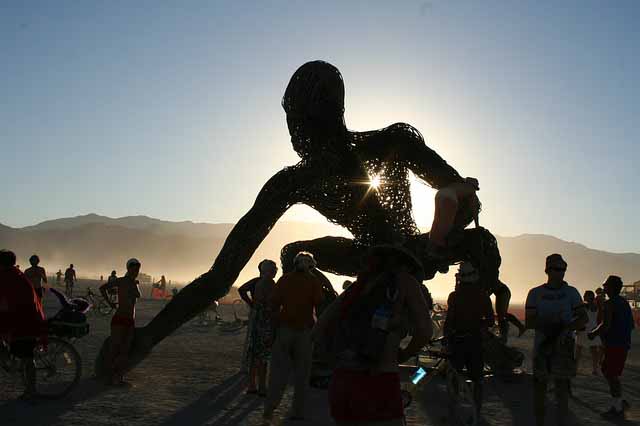

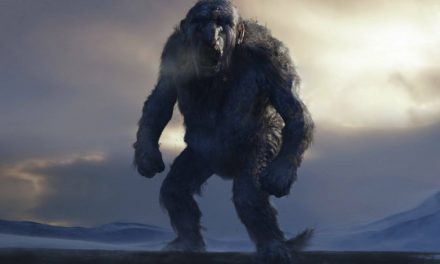
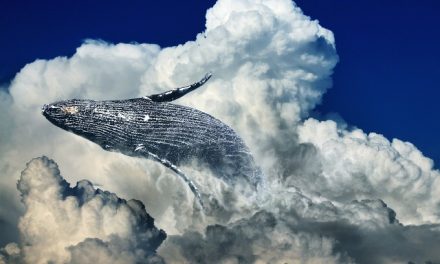
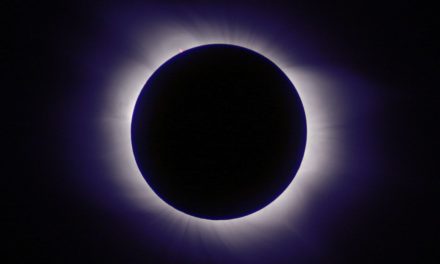




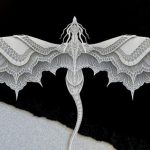
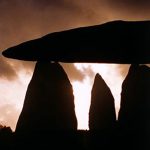



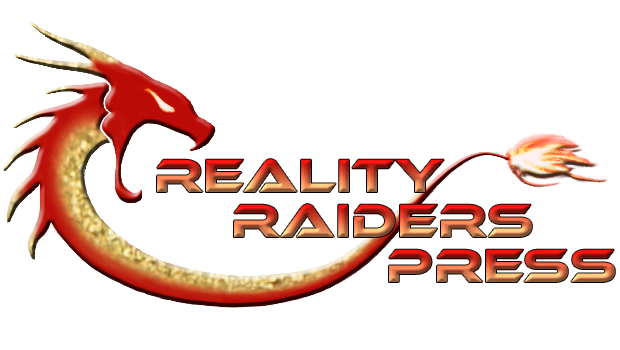
I believe they were among us, for sure. The first one I ever encountered in reading outside of fairy tales was the Welsh Ysbaddaden, who I wager you already have on your list ( https://en.wikipedia.org/wiki/Ysbaddaden) and I wrote a short story in my literary collection “The Winning of Olwen” mentioning him. This stuff is just so fascinating, and add King Arthur into the mix, with Culwich and Olwen (https://en.wikipedia.org/wiki/Culhwch_and_Olwen), it simply grand story. Legends absorb us on the instant. That has to be because they echo reality in our ancient memory.
After of all the folktale reading I’ve done, I can’t believe I missed that one. Thanks so much for including the links. I’ll have to read your short story. Sounds wonderful! 🙂